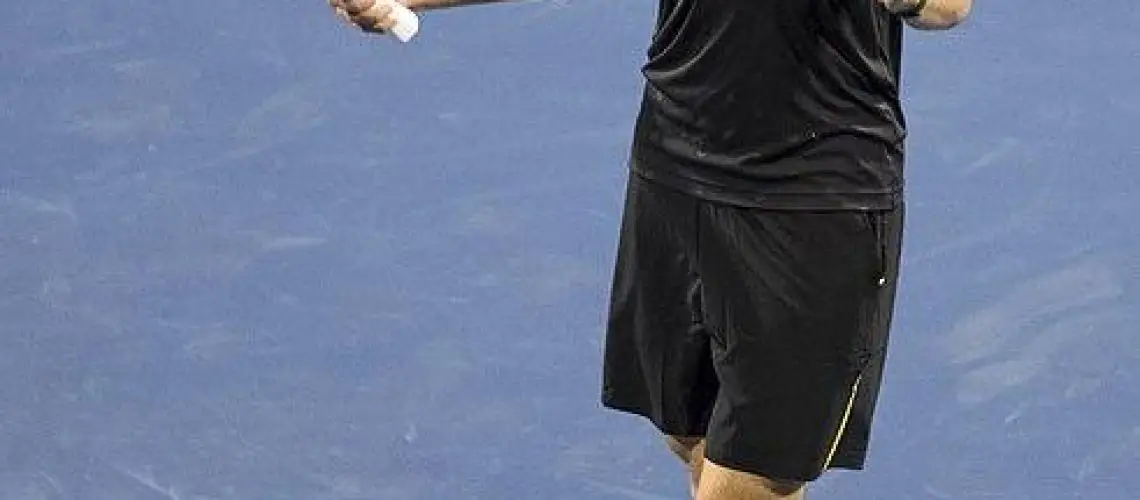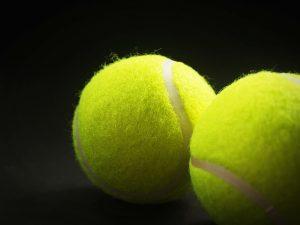We may earn money or products from the companies mentioned in this post.
Introduction

When it comes to playing tennis, holding the racquet correctly is of utmost importance It may seem like a small detail, but it can have a significant impact on your game By mastering the proper grip and technique, you can enhance your control, accuracy, power, spin, and even prevent injuries
The Importance of Holding a Tennis Racquet Correctly
1 Better Control and Accuracy:
A correct grip allows for better control over the racquet It enables you to accurately place shots with precision and finesse Whether you’re aiming for the corner of the court or executing a delicate drop shot, having a proper grip will greatly improve your ability to hit the ball where you intend
2 Improved Power and Spin:
A correct grip not only enhances control but also increases power and spin in your shots When you hold the racquet correctly, it allows you to generate more racket head speed, resulting in more powerful strokes Additionally, by using specific grips such as the Western or Eastern grip, you can create more topspin or slice on the ball respectively
3 Prevention of Injuries:
Holding the racquet incorrectly can put unnecessary strain on your wrist, elbow, and shoulder joints This can lead to injuries such as tennis elbow or shoulder pain By adopting a proper grip technique that aligns with your natural biomechanics, you can minimize stress on these areas and reduce the risk of injury
Common Mistakes Made by Beginners
1 Holding the Racquet Too Tightly:
One common mistake beginners make is gripping the racquet too tightly out of fear of losing control or dropping it during play However, this tightness restricts wrist movement and hampers your ability to generate power and spin It’s important to find the right balance between a firm grip and allowing for fluid movement of the wrist
2 Using an Incorrect Grip:
Another mistake beginners often make is using an incorrect grip There are various grips in tennis, such as the Eastern, Western, and Continental grip Each grip has its own advantages and is suitable for different types of shots Using the wrong grip can limit your shot selection and hinder your overall performance on the court
To maximize your potential as a tennis player, it’s crucial to pay attention to how you hold the racquet By understanding the importance of a correct grip and avoiding common mistakes made by beginners, you’ll be well on your way to improving your game and enjoying all that tennis has to offer
Types of Tennis Grips

Tennis grips play a crucial role in determining the effectiveness and versatility of your shots Each grip has its own set of advantages and disadvantages, catering to different playing styles and shot preferences Let’s explore some of the most common tennis grips:
Eastern Forehand Grip
The Eastern Forehand Grip is a classic grip that provides a natural feel and is well-suited for players who prefer hitting flat shots with power With this grip, you can generate solid pace on your forehand strokes, allowing you to dictate play However, it does come with limitations – topspin may be limited, making it challenging to control high balls effectively
Semi-Western Forehand Grip
If you’re looking to add more topspin to your shots while maintaining good control on high balls, the Semi-Western Forehand Grip might be ideal for you This grip allows you to generate greater topspin on your forehands, enabling the ball to dip and bounce higher over the net On the flip side, it can be challenging to hit flat shots with this grip and it may result in less power on low balls
Continental Grip (also known as Chopper Grip)
The Continental Grip is a versatile grip that can be used for all strokes in tennis, making it popular among players who like variety in their game or need flexibility during serves and volleys This grip offers excellent maneuverability and adaptability across different shot types However, compared to other grips, it may produce less topspin
Western Forehand Grip
For aggressive baseliners who thrive on extreme topspin generation, the Western Forehand Grip is worth considering With this grip, players can achieve incredible topspin, causing the ball to kick up high and bounce awkwardly for their opponents It’s an ideal grip for players who enjoy heavy topspin shots However, it can be difficult to hit flat shots or low balls with this grip, and mastering it may require some time and practice
How To Hold Each Tennis Racquet Grip Correctly

When it comes to playing tennis, holding the racquet correctly is crucial for optimal performance Each grip has its own advantages and techniques, so let’s dive into how to hold each tennis racquet grip correctly
Finding The Bevels On The Handle
The first step in finding the right grip is identifying the eight-sided octagonal shape of the handle This shape provides reference points for different grips Once you’ve located the handle’s shape, it’s time to learn how to locate and number the bevels from one to eight
Holding The Eastern Forehand Grip
The Eastern Forehand grip is a popular choice for players looking for control and power in their shots To find and hold this grip properly, start by placing your base knuckle on bevel three and wrap your fingers around the handle Make sure your index knuckle aligns with bevel three as well
Holding The Semi-Western Forehand Grip
If you prefer a more versatile grip that allows you to generate topspin, the Semi-Western Forehand grip might be ideal for you To achieve this grip, place your base knuckle on bevel four and angle your hand slightly towards the left side of the racquet handle Wrap your fingers around comfortably while keeping your index knuckle aligned with bevel four
Holding The Continental Grip
The Continental Grip is commonly used for serves, volleys, or slice shots To hold this grip correctly, position your base knuckle on bevel two and rotate your hand slightly towards the right side of the racquet handle Ensure that your index knuckle aligns with bevel two for proper hand positioning
Holding The Western Forehand Grip
If you’re looking to generate extreme topspin, the Western Forehand grip is your go-to choice To achieve this grip, place your base knuckle on bevel five and angle your hand significantly towards the left side of the handle Your fingers should comfortably wrap around the handle while keeping your index knuckle aligned with bevel five
Remember, finding the right grip that suits your playing style and comfort is essential for a successful game Practice each grip and experiment to see which one feels most natural to you With time and practice, you’ll master these grips and enhance your tennis skills
Tips, Drills, and Exercises to Improve Grip Technique

Importance of practice and muscle memory
When it comes to improving your grip technique in tennis, consistent practice is key Just like any other skill, the more you practice, the better you become By dedicating time to honing your grip technique, you’ll develop muscle memory that allows for smoother and more efficient movements on the court
Tennis ball squeeze exercise
A great way to strengthen your forearm muscles and improve grip strength is through a simple exercise using a tennis ball Squeezing the ball with your hand engages the muscles in your forearm responsible for gripping the racket Regularly incorporating this exercise into your training routine can lead to increased power and stability in your shots
Switching Grips Drill
In tennis, different shots require different grips To enhance your ability to transition between grips seamlessly during gameplay, practicing the switching grips drill is essential This drill involves repeatedly changing between various grips while moving around and hitting balls from different positions on the court By mastering this drill, you’ll be able to adapt quickly and effectively during matches
Racquet Balancing Drill
Developing hand-eye coordination and a better sense of racquet feel is crucial for improving grip technique The racquet balancing drill helps refine these skills by challenging you to balance your racket on its edge using only one finger or even just two fingers This exercise enhances control over your racquet while providing a deeper understanding of its weight distribution
Shadow Swings
To focus solely on grip changes and technique without worrying about hitting the ball, shadow swings are an excellent training method Practicing swings without contact allows you to pay close attention to the positioning of your hand and the fluidity of your grip transitions This exercise can help you identify any weaknesses in your technique and make necessary adjustments
Recap Of Importance Of Holding Tennis Racquet Correctly

Throughout this article, we have emphasized the crucial role of holding the tennis racquet correctly The way you grip your racquet can significantly impact your performance on the court By understanding and implementing proper hand positioning and grip techniques, you can enhance your control over the ball, generate more power in your shots, and reduce the risk of injury
Remember that having a solid foundation in your grip allows for better racket control and maneuverability Whether you use the Eastern grip, Western grip, or any other variation suitable for different strokes, mastering the correct technique will give you a competitive edge
Encouragement To Keep Practicing And Experimenting With Different Grips

As with any skill in tennis, practice is key to improvement Don’t be afraid to experiment with different grips during training sessions or friendly matches Trying out various grips will help you discover which ones work best for specific shots or playing styles
Keep in mind that finding the perfect grip may take time and patience It’s a personal journey that requires trial and error Embrace the process and don’t get discouraged if it doesn’t come naturally at first Every player has their own unique style, so find what works best for you
Additionally, seeking guidance from a qualified coach can provide valuable insights into refining your grip technique They can offer expert advice tailored to your individual needs and help develop a customized approach that maximizes your potential on the court
In conclusion, holding the tennis racquet correctly plays a vital role in optimizing performance and preventing injuries on the tennis court By prioritizing proper hand positioning and experimenting with different grips under professional guidance, you’ll unlock new levels of control, power, and versatility in your game
Useful Links

How to Grip a Tennis Racket (with Pictures)
Tennis Grips | Different types of forehand grips explained
Tennis Forehand Grip: Where To Place The Index Finger
Ultimate Tennis Grip System Guide
Tennis Grips: The Ultimate Guide (with Photos)
Tennis Tip: How To Find Your Racquet Grip Size
This is How You measure Your Tennis Grip Size
How To Hold A Tennis Racket Based On Feel
The Different Types of Tennis Grips and How to Choose …
How Tennis Racket Grip Sizes Are Measured
How to Hold a Table Tennis Racket
Tennis
The ultimate tennis racquet guide
The Tennis Grip Guide by Tennisbuilder | Designed for …
Tennis Forehand Grip Explained – All 4 Types [Used By Pros!]
How to Swing a Tennis Racket for Beginners
Four Steps to Determine Your Tennis Racket Grip Size
How To Measure Grip Size






